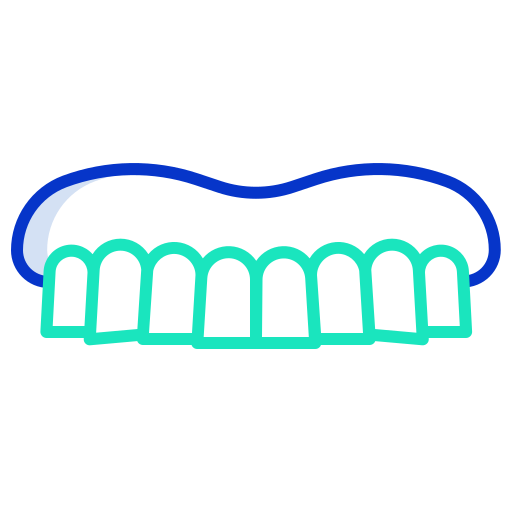Dental Crowns - Boynton Beach, FL
A dental crown is a dental restoration that completely covers the visible portion of your tooth. A dental crown is cemented onto the tooth, restoring the tooth to its original natural-looking appearance.
Three main types of dental crowns exist, depending on the type of material: (#1) porcelain crowns, (#2) porcelain-fused-to-metal crowns, and (#3) gold crowns.
A porcelain crown is made completely of porcelain, which is an extremely natural looking and aesthetic material. Porcelain-fused-to-metal crowns are made with a metal inside and porcelain outside; the metal inside provides proper strength and the porcelain outside provides a beautiful appearance. Gold crowns are obviously made of gold but are rarely used anymore due to their poor aesthetics.
Why would you need a dental crown? It may be the best option in various situations: a filling breaks, a tooth chips, a cavity is too large, or a tooth is misshaped.
A dental crown typically takes two appointments to complete. At the first appointment, your dentist will numb the area to ensure your comfort throughout the procedure. Then, the tooth will be prepared for the crown by filing it down slightly to achieve the perfect proportions and shape. Then, a mold of the tooth is taken and sent to a dental laboratory, where the crown is made to the exact specifications necessary. At the next appointment, the crown will be cemented in.
An implant crown is a special type of dental crown that is placed on top of an implant to replace a missing tooth. A dental implant is a titanium screw that is placed in the jaw bone in the area of a missing tooth. Then, an implant crown that looks and feels like a natural tooth is placed on top of the implant screw to replace the missing tooth.
Below, you will find links to extensive information that I wrote about dental crowns. The internet provides very few articles about them, so I wanted to help the public read about the types, costs, advantages, disadvantages, and procedures of tooth crowns and implant crowns.
Why Would I Need a Dental Crown?
Your dentist may have informed you that a tooth needs a dental crown (also referred to as a cap). For various reasons, most people will need at least one crown in their lifetime. So, which situations typically require a dental crown?
- A tooth with a lot of decay
When tooth decay (also referred to as a cavity) becomes so large that a filling cannot be used to restore the tooth to health, a dental crown may be necessary. - A broken down tooth
If a tooth chips or fractures, a dental crown may be needed. - A large filling breaks
Large fillings can fracture. Rather than placing another large filling that will be prone to breaking again, a crown may be needed. - A tooth that had a root canal
Research has shown that after root canals, teeth are more brittle and more prone to fracture. Comprehensive evidence further shows that a dental crown is needed to reduce the risk of a tooth fracturing after a root canal. People often have a root canal and postpone having a dental crown placed on the tooth. Unfortunately, these teeth are at a high risk of fracturing, causing a dental emergency. So, if you have a root canal on a tooth, you should visit your dentist for an evaluation for a crown. - A severely misshaped, stained or unattractive tooth
In certain situations, a dental crown may be needed to improve the appearance of a distinctly misshaped, stained or unattractive tooth. - A dental implant to replace a missing tooth
A dental implant is a titanium screw that is placed in the jaw bone in the area of a missing tooth. Then, an implant crown that looks and feels like a natural tooth is placed on top of the implant screw to replace the missing tooth.
What Happens During The Procedure?
The first step of a dental crown is a thorough evaluation by your dentist to ensure a crown is necessary. Then, you and your dentist will discuss the options to determine which type of crown is best for you.
If a dental crown is needed, the procedure typically takes two visits:
First Visit
At the first visit, your dentist will begin by numbing the tooth and the surrounding gums, which will ensure your comfort throughout the appointment.
In order for the dental crown to fit properly, the tooth will be filed down to specific dimensions. Then, a mold of your tooth will be taken with an extremely detailed impression material. You and your dentist will discuss the desired color of the dental crown.
Some patients like the crown to be slightly lighter than their natural teeth. In this scenario, teeth whitening is often suggested before choosing the crown’s color to ensure a proper match.
The mold of the tooth will be sent to the dental laboratory where the dental crown will be made to the dentist’s specifications.
While the dental laboratory makes the final crown, you will have a temporary crown. The temporary crown will be made using a tooth colored material and will match your other teeth in color and shape. The temporary crown will be cemented in place with temporary cement, so it can be removed next visit when the final crown will be placed.
Second Visit
At the second visit, your dentist will remove the temporary crown and place the final crown. After ensuring the proper fit with an x-ray, your bite will be checked and adjusted if the crown is too high. If you are satisfied with the appearance of the crown, extremely strong cement will be used to cement the dental crown in place.
How Do I Take Care Of My Crown?
A dental crown should not be treated any differently than other natural teeth. You should continue proper oral hygiene with routine brushing and flossing. The only change dentists recommend is the way you pull your floss out; when flossing around a dental crown, you should slide the floss out instead of snapping the floss up and out. Your hygienist or dentist will practice this technique with you.
You should floss at least once each day. When you brush, the bristles cannot enter the crevice between your teeth. So, without flossing, you are missing around 30-40% of the surfaces of your teeth.
You should brush at least twice per day at the correct times. Unfortunately, people brush at times that are not ideal. People wake up and immediately brush their teeth. However, the point of brushing is to remove plaque, food, and bacteria. Thus, you should wait until after breakfast to first brush. Also, you want to brush after the last thing you eat before bed. Some people brush after dinner but have a snack later in the night. Without brushing after the snack, you are going to sleep with food on your teeth.
How Long Will My Crown Last?
Predicting the life expectancy of a dental crown is extremely challenging. Many factors affect their longevity: your oral hygiene, how often you visit the dentist, the technique used by the dentist, and the biting force applied to the dental crown.
Research has shown that the average success rate of a dental crown is between 5 and 10 years. However, I have seen countless caps last more than 20 years in my office.
One important aspect of the longevity of a dental crown is the tight contacts that it makes with the adjacent teeth. A loose contact, one where the floss goes right through without a snap, can lead to food getting trapped when eating. Accumulations of food next to a dental crown can obviously lead to gingival inflammation and caries developing underneath the cap. Thus, tooth crowns need be in strong contact with adjacent teeth.
What If My Crown Needs Repair?
Although crowns are built to last a long time, a problem may develop. If a dental crown happens to chip, break, or falls off, you should see your dentist without delay. At this appointment, many factors will be considered to determine how to treat the problem. If the crown is slightly chipped, a minor repair is typically possible. If the damage is substantial, the tooth crown may need to be remade.
What if your crown fell off and you are unable to immediately visit your dentist?
As a temporary solution, you can visit your local pharmacy and purchase dental cement. Clean the inside of the crown and follow the directions printed on the product. In some products, the cement needs to be mixed, while other cements are activated upon opening. I would like to emphasize that you should dry the tooth as much as possible before using the store-bought dental cement. The longevity of the dental glue drastically increases if the area is dry. You should try to clean up any excess cement around the tooth after the cement hardens. Even if you do re-cement the crown yourself, you still should contact your dentist quickly to schedule an evaluation.
Will I Experience Any Aches or Pains?
Pain from a dental crown should not be taken lightly. Toothaches can begin as a mild discomfort and progress rather quickly and severely. Thus, immediate dental care is highly recommended.
What causes a toothache in a tooth that has a dental crown?
Well, there is a hollow space in the middle of each tooth that holds the tooth’s nerve. A toothache typically stems from the tooth’s nerve becoming inflamed. The nerve can become inflamed from many different causes: a large cavity that developed underneath the crown, a fracture in the tooth, too much biting force on the tooth, or a traumatic blow. The pain can present in a wide range of forms, from sporadic discomfort to lingering severe pain. Also, the pain can have various triggers: cold water, hot water, chewing, or speaking.
What can relieve the discomfort? Every situation is different, but these are possible treatments:
Reduce the biting force on the tooth crown: In some situations, a toothache may be due to excessive force on a tooth during chewing. Your dentist may adjust your bite and slightly reduce the crown’s height. As a result, the biting force would be reduced on that tooth and dispersed evenly throughout the mouth.
Root canal: If the tooth’s nerve is inflamed and causing pain, a root canal is sometimes needed. During a root canal procedure, the nerve of the tooth is removed and the internal space holding the nerve is disinfected and filled with a biocompatible dental material.
Dental extraction: In some situations, the tooth may be severely broken down or fractured, and the tooth may not be able to be saved. In this case, the tooth may need to be extracted, and your dentist would discuss the options to replace the tooth (like a dental implant or bridge).
What else mimics a toothache?
Actually, some people experience symptoms that closely resemble a toothache but stem from other sources, like a sinus infection. In this situation, your dentist will discuss your medical history and take an x-ray to check if a sinus infection is present.
What is the first step of emergency dental care for a toothache?
An x-ray and an evaluation by a dentist are needed to form a definitive diagnosis and discuss treatment options.
Services
Testimonials











